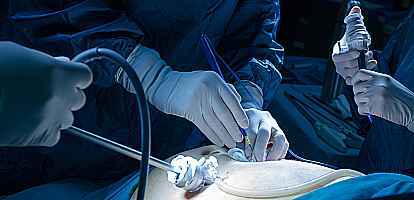Ureteric (JJ) Stent Insertion
Introduction
A Ureteric (JJ) Stent is a flexible plastic hollow tube that has a coil on both ends (resembling a J shape) and measures about 24 to 30 cm in those used in adults. It is placed in the ureter (the natural tubes that drain the kidneys to the bladder) and the coils ensure that the stent does not migrate either too far up into the ureter or too far down into the bladder. The JJ stent is positioned internally and usually does not drain out of the body.
What are its functions?
Unblocking the kidney, relieving pain, and reducing infection:
Because the stent is hollow, it can drain urine from the kidney down to the bladder. Therefore, its primary purpose is to unblock the kidney. This way, the risks of kidney damage and infection are much reduced. It can also relieve the pain caused by the kidney obstruction.
There are many causes of kidney obstruction – some of the more common ones are:
- A stone that is lodged in the ureter causing pain (see kidney stones).
- Ureteric tumour causing intrinsic (internal) obstruction.
- Abdominal tumours causing extrinsic (external) obstruction.
- Ureteric strictures (scarring which can narrow the lumen of the ureter).
Dilating the ureter
A stent can also be inserted as part of a staged procedure to treat ureteric stones. Sometimes a stone can be lodged too tightly in the ureter and cause internal swelling in the ureter. This makes a primary stone extraction surgery difficult as well as dangerous (risk of perforating the ureter) because of the limited space to work with. Inserting and leaving a stent in for a short time can dilate the ureter and make the subsequent definitive stone surgery safer and easier.
Letting the ureter heal
In patients with a ureteric injury or surgery involving the ureter (e.g., ureteric reimplantation surgery), a stent is placed to allow the urine to drain from the kidney directly into the bladder and ‘bypass’ the ureter to a certain extent. This allows the ureter to rest and heal.
Identifying the ureter
Some major abdominal surgery can potentially cause inadvertent ureteric injury because the ureters lie posteriorly in the abdomen and are not easy to identify. In this case, a stent can be inserted before the surgery. The ureter will then have a stent within it and the surgeon can ‘feel’ for the stent to help identify and preserve the ureter. The stents are then usually removed at the end of the surgery.
How is it inserted?
A stent can either be inserted retrogradely (from the bladder up into the kidney) or antegradely (from the kidney down to the bladder).
Retrograde insertion
The retrograde method is more commonly done because the bladder has a natural opening and can be accessed with a cystoscopy. Whilst under general anaesthetic, the bladder is first inspected, and the ureteric opening is identified. A guide wire is inserted up the ureter – a stent is then inserted over the guide wire. The guide wire is then removed, leaving only the stent. The stent’s coils on each end prevent it from migrating up or down. If necessary, the retrograde method can also be done under local anaesthetic, especially in those who have higher risks with general anaesthetic (e.g., frail patients, pregnant women).
Antegrade insertion
The antegrade method involves the creation of a small tract from the flank directly into the kidney to gain access to the kidney. An external draining tube placed in such a tract is called a nephrostomy tube. Most of these nephrostomy tubes are inserted by radiologists with the help of X-ray machines. Once a nephrostomy tube is in, a guide wire can be inserted down the ureter into the bladder and a JJ stent inserted over the wire. The guide wire is then removed, leaving behind an internal JJ stent. The nephrostomy tube is subsequently removed. In some patients who are too unwell to have a general anaesthetic retrograde JJ stent insertion, a nephrostomy tube is the alternative to unblock and drain the kidney as it can be done with the patient under sedation or local anaesthetic.
What are the side effects and complications of a JJ stent?
The JJ stent can rub on the internal lining of the kidney, ureter and bladder causing blood in the urine. It is uncommon for this type of bleeding to be severe. The coil that lies in the bladder can cause bladder irritation, which manifests as symptoms like passing urine frequently, strong urges to pass urine and burning when passing urine. Because the stent is hollow, some urine refluxes up from the bladder into the kidney during urination when the bladder contracts. This ‘refluxing’ discomfort can be quite uncomfortable in some patients, and they are advised to sit down and void slowly. These side effects are expected while the stent is present and usually resolve once the stent is removed.
If a stent is left in for too long, it can encrust and form stones all along it. This can lead to obstruction of the kidney and potential kidney damage and pain. An encrusted stent can be very difficult to remove surgically. It can also harbour bacteria and cause recurrent urinary infections.
How is it removed?
The bladder end of the stent can be grasped during a cystoscopy and the stent removed out of the bladder. This procedure is usually done under local anaesthetic or light sedation and takes about 5 to 10 minutes to do. Sometimes, a string that is attached to the stent is left dangling out of the urethra (the opening of the bladder through which one urinates). The string can then be grasped, and the stent pulled out.

